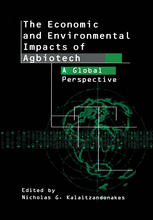

Most ebook files are in PDF format, so you can easily read them using various software such as Foxit Reader or directly on the Google Chrome browser.
Some ebook files are released by publishers in other formats such as .awz, .mobi, .epub, .fb2, etc. You may need to install specific software to read these formats on mobile/PC, such as Calibre.
Please read the tutorial at this link: https://ebookbell.com/faq
We offer FREE conversion to the popular formats you request; however, this may take some time. Therefore, right after payment, please email us, and we will try to provide the service as quickly as possible.
For some exceptional file formats or broken links (if any), please refrain from opening any disputes. Instead, email us first, and we will try to assist within a maximum of 6 hours.
EbookBell Team

0.0
0 reviewsAfter almost fifteen years in the laboratory and in the test plots, bioengineered crops arrived to the market in the mid-1990s. Adoption was rapid and wide spread. In 1996, less than 4 million acres in six countries were planted with bioengineered crops. By 2001, worldwide adoption had expanded to more than 115 million acres. Important questions quickly followed. What were the factors driving the widespread adoption and rapid diffusion of these first-generation agrobiotech nologies? What were their economic and environmental impacts? How were such impacts distributed among large and small producers, innovators and adopters, developed and developing countries, exporters and importers, domestic and foreign consumers? How were such impacts and their distribu tion affected by market structure and government policies? A growing body of literature has provided valuable answers to some of these questions. However, an assessment that accounts for the full range of differences in geography, weather, pests, farm structures, and institutions had not been completed. It brings together leading This book provides just such an assessment. authors from around the world who have analyzed the production, environ mental, and economic impacts of first-generation crop biotechnologies. By pooling experiences across various countries, time periods, crops, and traits, this global panel is able to synthesize a complete picture of the impacts of first-generation crop biotechnologies.